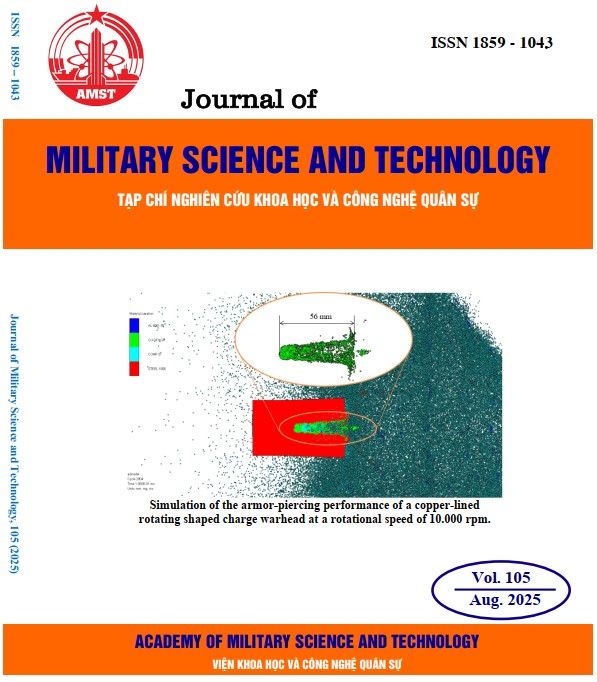Influence of technological parameters on the hot-pressed process of CaF2 optical ceramics
291 viewsDOI:
https://doi.org/10.54939/1859-1043.j.mst.105.2025.113-120Keywords:
Experimental planning; CaF₂ optical ceramics; Hot-pressed process; Transmittance; Optical equipment.Abstract
The paper uses the experimental planning method to study the influence of technological parameters on the hot pressing process of CaF2 optical ceramics. The experimental planning model is applied to build the correlation equations between technological parameters, such as temperature, time, and pressure, on the quality index of the transmittance of optical ceramics. From there, the authors determine the optimal set of hot pressing technological parameters for the hot pressing process of CaF2 optical ceramics. The research findings serve as an important basis for further studies on the hot-pressing process of various optical ceramics used in military optical devices.
References
[1]. R. Driggers et al., “Detection of small targets in the infrared: an infrared search and track tutorial,” Applied Optics, Vol. 60, No. 16, pp. 4762, (2021). DOI: https://doi.org/10.1364/AO.424767
[2]. X. Fan et al., “Preparation of MgF2–CaF2 nanocomposite ceramics with high infrared transmittance,” Journal of the European Ceramic Society, Vol. 42, No. 15, pp. 7203-7208, (2022). DOI: https://doi.org/10.1016/j.jeurceramsoc.2022.07.046
[3]. D. Gapinski, Z. Koruba, and I. Krzysztofik, “The model of dynamics and control of modified optical scanning seeker in anti-aircraft rocket missile,” Mechanical Systems and Signal Processing, Vol. 45, No. 2, pp. 433–447, (2014). DOI: https://doi.org/10.1016/j.ymssp.2013.11.016
[4]. S. F. Wang et al., “Transparent ceramics: Processing, materials and applications,” Progress in Solid State Chemistry, Vol. 41, No. 1–2, pp. 20–54, (2013). DOI: https://doi.org/10.1016/j.progsolidstchem.2012.12.002
[5]. Tunmise Ayode Otitoju, Patrick Ugochukwu Okoye, Guanting Chen, Yang Li, Martin Onyeka Okoye, and Sanxi Li, “Advanced ceramic components: Materials, fabrication, and applications,” Journal of Industrial and Engineering Chemistry, Vol. 85, pp. 34–65, (2020). DOI: https://doi.org/10.1016/j.jiec.2020.02.002
[6]. B. M. H., “Hot Isostatic Pressing ( HIP ) technology and its applications to metals and ceramics,” Journal of Materials Science, Vol. 39, pp. 6399–6420, (2004). DOI: https://doi.org/10.1023/B:JMSC.0000044878.11441.90
[7]. N. T. Hieu, L. M. Thai, N. T. Dung, D. Van Thom, and P. Van Minh, “Effect of Hot-Pressing Mold Design on Uniformity of Dome-Shaped Products from Infrared Optical Ceramics,” Lecture Notes in Mechanical Engineering, pp. 173–180, (2023). DOI: https://doi.org/10.1007/978-3-031-31824-5_21
[8]. N. T. Hieu and D. Van Thom, “A new experimental approach to measure the refractive index of infrared optical ceramic through the transmittance,” Ceramics International, Vol. 46, No. 16, pp. 25726–25730, (2020). DOI: https://doi.org/10.1016/j.ceramint.2020.07.049
[9]. Dean, Angela, and Daniel Voss, “Design and analysis of experiments”. Springer New York, (1999). DOI: https://doi.org/10.1007/b97673
[10]. N. H. Loc, “Giáo trình Quy hoạch và phân tích thực nghiệm,” Ho Chi Minh City National University Publishing House, p. 490, (2021), (in Vietnamese).







